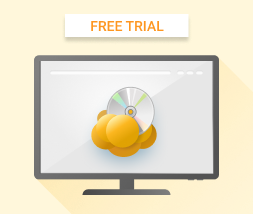If you’re a managed service provider (MSP) offering backup as a service (BaaS) for clients, then architecting your technology stack in the most efficient way is an important part of delivering value to your customers.
Sometimes, however, the best way to make progress is to start from scratch. Re-architecting backup approaches and the solutions stack can ultimately be more efficient than continuing to use inefficient ones.
In this blog post, we’d like to take a look at some of the factors that might prompt MSPs to consider alternative solutions and how to make the transition from current backup systems.
Why You Might Need to Change Backup Approach
There are several reasons why MSPs might wish to consider moving to new backup systems:
Proprietary Data Formats
Many backup vendors use systems that create backups using proprietary formats. This results in vendor lock-in. Additionally, it impedes portability. For instance, MSPs might need to pool together clients’ existing backups and add them to a centralized data archive. If those backups are locked in proprietary formats, then this is going to present a problem, because the data cannot be migrated in.
Additionally, while MSPs might be able to migrate these backups into the system, the backup pool needs to be of a consistent format. For the purpose of disaster recovery (DR) and restore approaches, especially when incremental and differential methodologies are used, backups also need to be stored in a format that allows for easy recovery. If this is another vendor’s proprietary format, then that backup data — even though it can be stored — will be useless.
Proprietary Storage
Many MSPs also end up dealing with companies that are backing up data to the cloud in proprietary formats. In many cases, this cloud storage isn’t portable and there is, therefore, no means of moving these backups into a backup pool stored in a separate location. This creates another problem.
Further reading Is Your Backup and Disaster Recovery Vendor Storage-Agnostic?
Legacy Backup Technologies
MSPs commonly encounter clients who are using legacy technologies to manage their backup pools. This presents another set of problems for those that need to migrate these existing backups into a pool of data. For instance, many clients might have only partial backups onto legacy technology — like flash drives. MSPs bringing on such clients for BaaS should make sure they have the means to standardize and replicate the data storage.
Inappropriate Technologies
Commonly, MSPs will encounter clients who are using backup approaches that do not make sense, given the type of data they are looking to protect. Inappropriate backup formats are another common issue that BaaS providers have to deal with. For instance, many clients are backing up low data volumes onto tape. While tape is great for long-term (cold) archival storage, it is less suitable for smaller-volume backup data that needs to be retrieved in less time. When looking for a backup provider, MSPs should consider what their clients are currently using. They should then focus on finding a technology partner that offers a technology that will be more appropriate for their clients’ use cases.
What to Look For in a New Backup System
Before beginning the process of migrating to a new backup system or provider, MSPs should outline for their clients the parameters that they will need. This process should come before the actual vendor evaluation and should involve:
Feature Definition
Just as MSPs can discover pain points in their clients’ current backup approaches, they should also be able to home in on features of a backup system or partner that would meet those needs.
For instance, MSPs that are working with a wide variety of clients could focus on finding a backup system that supports the intake of a lot of different backup formats. If they know that they are working with some vendors using proprietary formats, they could focus on finding a system with support for those specific requirements (although, as outlined above, this could also present problems with restorability).
At the features-definition stage, MSPs should focus on what requirements need to be met. The qualification criteria can then guide the procurement process.
Further reading 4 Essential Features of the Managed Backup Software
Backup Plan Definition
Additionally, MSPs need to be clear on what each client’s backup plan is. The recovery point objective (RPO) and recovery time objective (RTO) are two fundamental targets that set out how each client wishes to have their data backed up.
Because each client will have a different RPO and RTO, MSPs need to conduct a survey of their existing and target clients to determine what are the most credible objectives to roll into a service level agreement (SLA) for backup as a service (BaaS).
Backup service providers should be evaluated to assess whether the tools they are offering are capable of aligning with the targets that the service provider has determined, to consider which are the most realistic.
[in-text CTA] Backup Best Practices
How to Migrate Backup Systems
If you’re an MSP bringing your clients onto a new backup system, then you should formulate a communication and rollout plan to make the transition as seamless as possible. Don’t forget to run through the guideline search criteria before finalizing your vendor.
1. Notification
Start by telling your client(s) about the new backup offering that you are capable of delivering. Make sure that you have all the information developed that you need in order to make clear to the interested parties exactly what you can do now, and what this means for them. Framing the developments in terms of benefits for clients is important to ensure enthusiastic buy-in.
2. Get Clear on Scope
If you’re providing BaaS to clients for the first time, then you’ll want to give them a clear roadmap for how to get their backup data from their servers onto yours. You might want to include such details as which media the client can retire after the migration. MSPs should also clarify the division of labor, spelling out exactly what resources the client will provide as part of the process.
3. Migrate
Once all the preparatory steps have been taken care of, it’s time to get down to business! MSPs should work with clients to make sure that backup data is migrated to the company’s servers.
4. Test Your Backups
All backups need validation, and untested backups may be as good as nothing. To ensure that the data migration has taken place successfully, organizations should test the restore process from the data migrated to the MSP.
5. Test Restores
Test restores aren’t one-off processes. In fact, standard operating procedures (SOPs) should dictate a frequently occurring test day during which test restores are initiated. The time interval should be determined by the client.
6. Cut Off the Old Solution
After the new backup strategy has been implemented, deployed, and tested, clients’ old backup approaches can be safely retired. This might mean retiring servers, workflows, and legacy hardware.
Make a Successful Transition
For MSPs, ensuring that their backup offering matches customer needs is an important process. Understanding clients’ current backup systems, their pain points, and expectations can all help clarify what technology the MSP can offer that will most easily resolve these. MSPs should also plan for common pitfalls like proprietary data formats, legacy technology, and suboptimal backup approaches.
MSPs providing backup services should make sure that the technology they offer aligns with clients’ expectations. To ensure a smooth migration, a plan should be communicated to stakeholders, outlining all the required steps. In this way, MSPs can deliver maximum value to their clients and provide them with the ideal solutions to their data protection needs.







